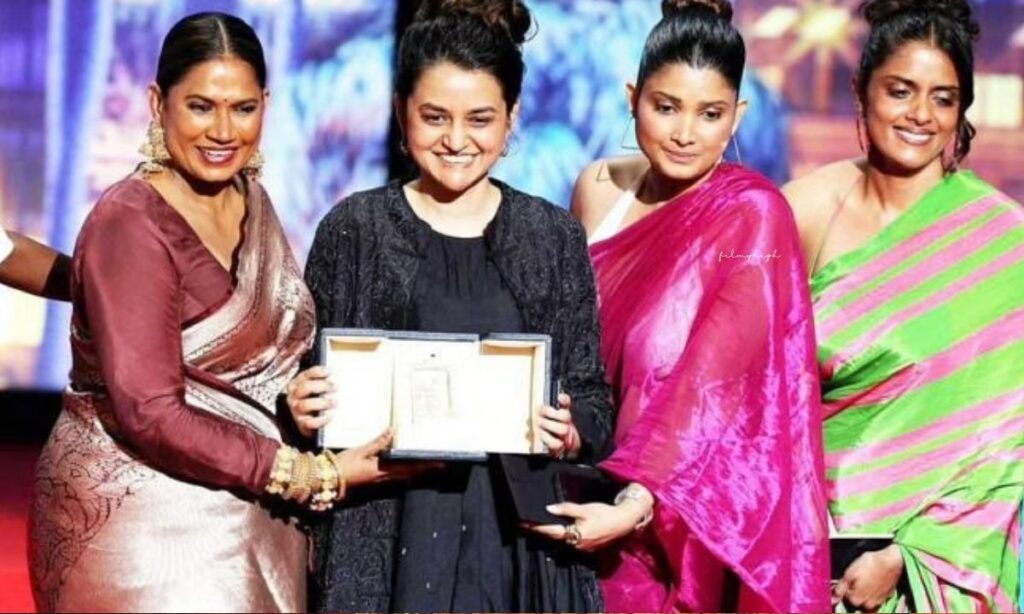All We Imagine as Light The most recent film by Payal Kapadia, All We Imagine as Light, brings attention to the hardships faced by innumerable unnamed migrants who arrive in Mumbai carrying dreams of a more comfortable existence. However these people continue to be outsiders in this gigantic city with no respite or homecoming, they have never possessed one. Kapadia’s movie explores how much solitude and lack of support network there is for them within a society segregated into invisible gaps based on language, gender, religion’s traditional practices and social hierarchy.
Not only is this movie about the difficulties encountered by outsiders, it also examines the internal ones fought by those who have become familiar with isolation from small towns to large cities such as Mumbai. The film reveals how women in India strive to claim their identities within societies which constantly deny them beyond paternalistic standards through the stories of Anu (Divya Prabha), Prabha (Kani Kusruti) and Parvathy (Chhaya Kadam).
A Journey of Women Navigating a Male-Dominated World
Kapadia provides a moving narrative concerning women’s closeness and self-awareness. In a town that envelopes any possibility of real association, all three main characters start looking for the meaning of intimacy. Anu, Prabha, and Parvathy don’t only want love or connectedness; they also want to take charge of their lives in a society governed by cultural values, traditions and other forms of restrictions. The film illustrates their search for intimacy against the backdrop of revolt against the patriarchal system which is well established in India.

Kapadia’s direction employed here demonstrates clearly how women are overlooked in India whose yearnings and ambitions always viewed from a male point of view. This narrative surrounding the tale of these nurses comprises not only of their job-related experiences but also touches on their private lives in an environment that is more concerned with dictating what they should do.
A Quiet Film with a Radical Message
In spite of the significant subject matter, All We Imagine as Light avoids making loud and dramatic statements. Rather, it is a film with an apparently calm surface. There is no climactic ending here and this measured slowness, though on first appearance surprising, becomes one of the strongest points about the movie. It resonates with what these people go through every day as they live their lives devoid of any action or external stimulation.’
Also/ Read : Unlock the Best Car Insurance in California 2024:Save Big Now
Kapadia’s silence is a transgression on its own in opposition to the dominant noise of present-day Indian film. In contrast to boisterous manner used by most films that continue to churn out blockbusters, All We Imagine as Light makes its mark with slow pace and deepness like one of Tsai Ming-liang’s last movies titled Days (2020).
Mumbai Reimagined: A City of Alienation
In Kapadia’s narrative, Mumbai is represented as a cold city that disregards its dreamers rather than giving them hope. The lifelessness of the metropolis is evident in the silent and monotonous ways of its people who hardly ever leave their homes. Notably, most of the shots taken in Mumbai are at night and have a blueish hue with few patches of warm colors which have an overall impression of isolation and melancholy on the lives of the protagonists.

Kapadia’s protagonists are disconnected from those around them even when living in a populated area. This is emphasized even more by the sound design of the film. An eerie silence that could be mistaken for the usual noise of Mumbai streets replaces this chaos; as if it does not care about its dwellers’ problems. This artificial silence is juxtaposed with voiceovers of nameless migrants and makes us realize how many voices go unheard in a city like Mumbai.
The Search for Closure and Reconnection
Around midway through the film there is a faint change in direction as the three main characters abandon Mumbai for a seaside settlement. The city’s icy blues are starkly dissimilar from these warm yellow tones and bright hues in the village, indicating that there might still be some hope and reconnection between them all. This is where they will start facing their internal conflicts while looking for closure.
Thus, for Prabha, it is about confronting the void created by her partner’s departure to Germany. To ease her conscience, she needs to find out the truth about her lost husband who has been presumed dead until now. Her need for self-contentment is provided by a mysterious man who appears in her village and who has been presumed to be her estranged husband.

At the same time Anu is concealing a secret love affair with Shiaz (Hridu Haroon), a Muslim boy and struggles with different moral problems that arise due to the need for privacy regarding this liaison. Parvathy struggles for her house against demolishers because they want to remove it from the earth leaving her almost without shelter.
Female Friendship as a Form of Resistance
Simply put, All We Imagine as Light talks about female friends having fun together despite being in a male-dominated society where girls are oppressed. Anu, Parbhat and Parvathi are not just there for each other through good times but also bad times which translate into their own rare form of rebellion. With each other’s help they become empowered enough to fight back against the system that restricts their freedom of choice.
The last minutes of the film, in a magical realist style, crystallise this notion of self-emancipation. Kapadia’s characters refer to themselves as people who have autonomy, renegotiating intimacy according to their choice in a community that always wants to label women depending on how they relate with men either through matrimony or other cultural contexts.
A Quiet Triumph in Indian Cinema
While the Indian movie industry is all about glitz and glamour, All We Imagine as Light is nothing but a quiet success. This movie is not only about Indian women’s lives or migrants; it talks of such things as belonging, closeness, and subdued revolts that take place in unusual locations.

The movies understated dynamic, mixed with how it deeped into female closeness, renders it as a remarkable inclusion in India’s movies. It metaphorically ponders gender, caste, class and religion while offering profound personal insights into the lives of people living at the fringe. Notably, Kapadia’s creation is not simply a movie; it similarly serves as an indication that even in most silent instants there resides mightiness, strength and aspiration.

